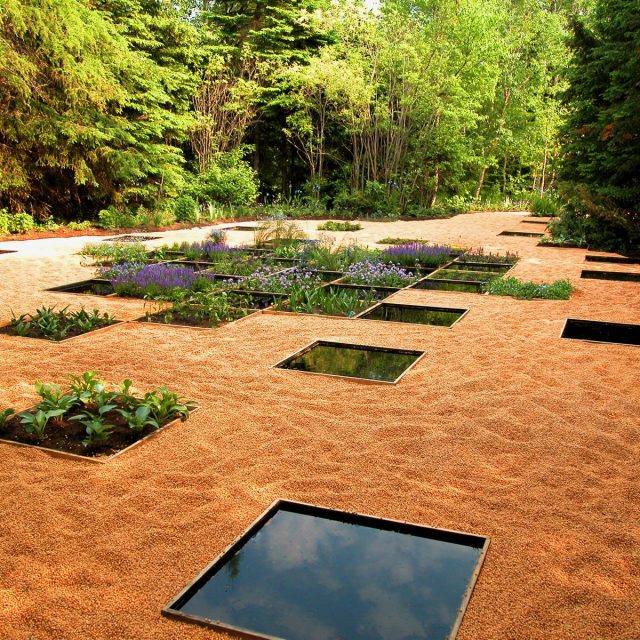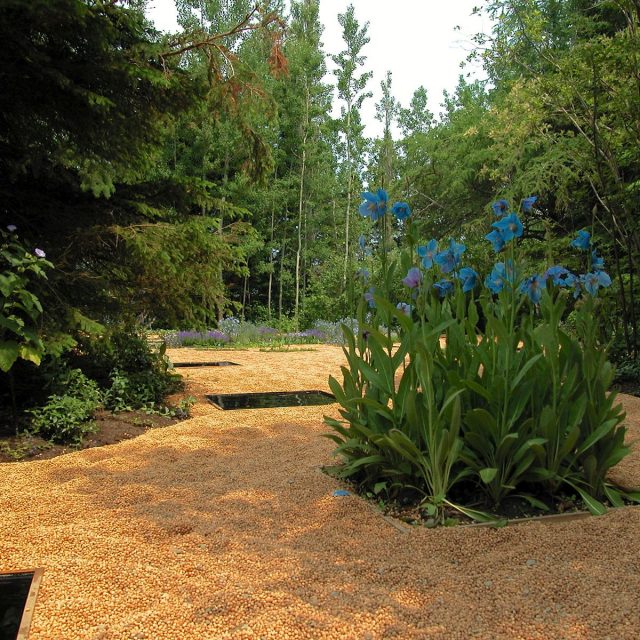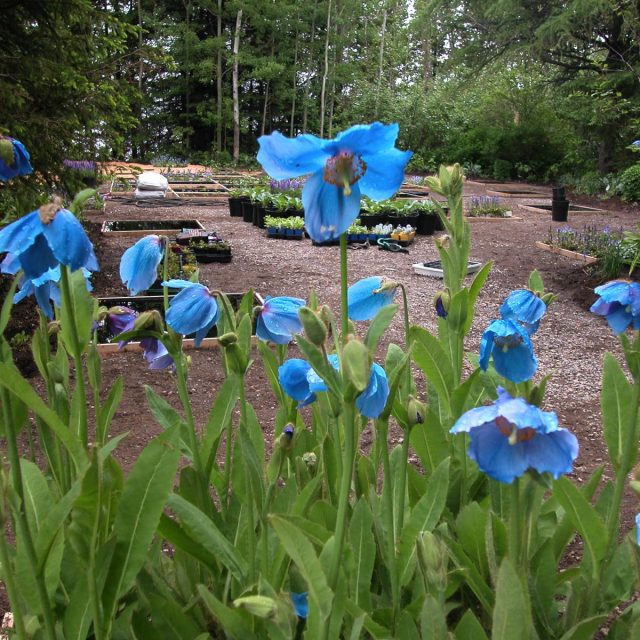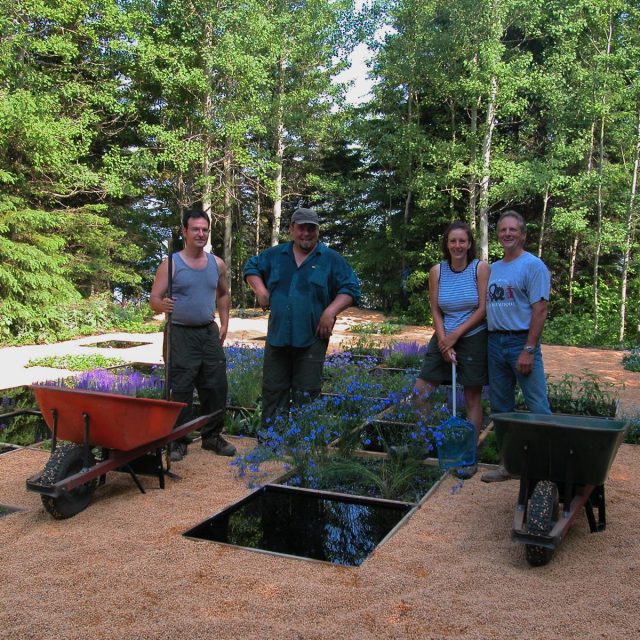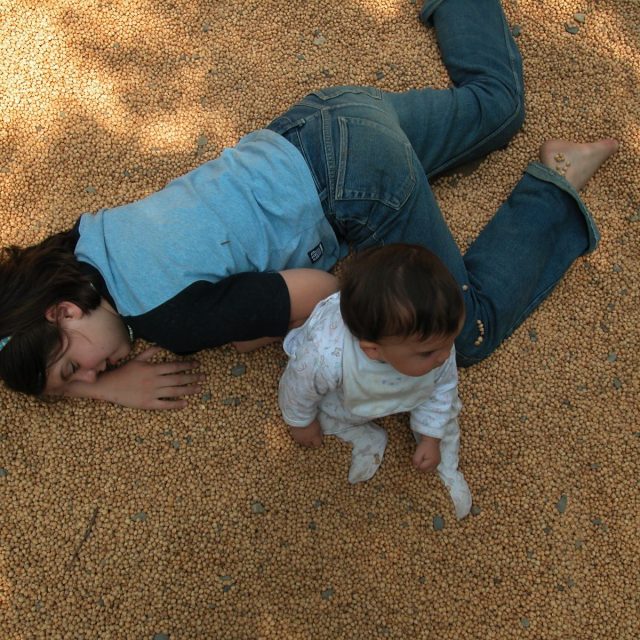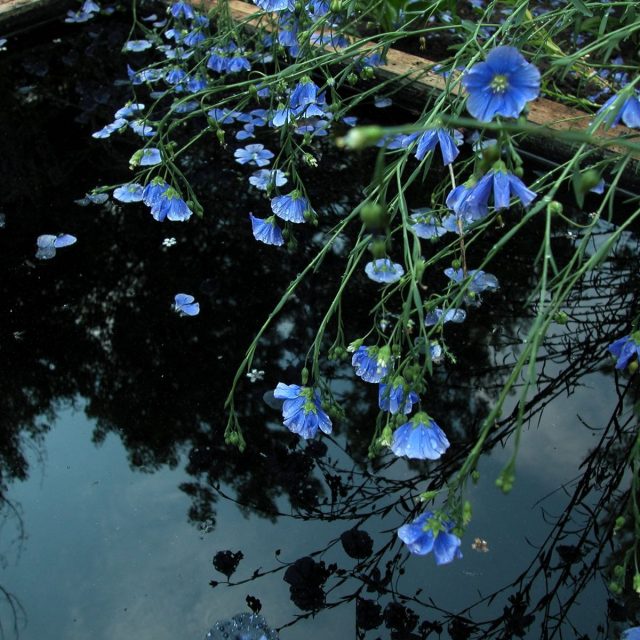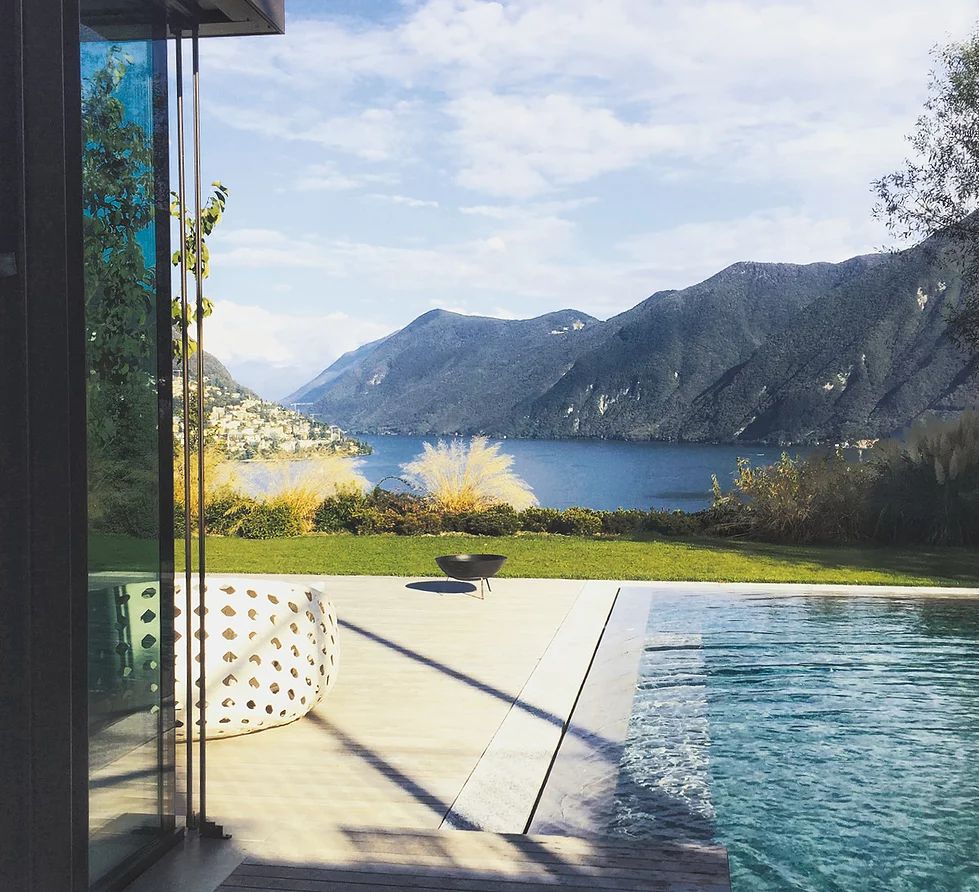When drawing, individual designers apply their own personal proportions, that may well be those that they assimilated in their imprinting, besides those of their bodies, and of the environment where they grew up: it feels as though each individual had one personal measurement unit that inevitably applies in any relationship with people and with the surroundings. Hence, when I devised my project for the Métis International Garden Festival, I spontaneously thought of laying a customised one-square-metre grid over the lot I had been assigned. For an Italian, the sheer size of Québec’s natural landscape is a superhuman challenge, just like the Saint Lawrence river/sea: in front of my garden, its banks are so far apart that you can’t see the other side. When I learnt that the iconic flower of the Reford Gardens – the sponsors of the event – is the Himalayan blue poppy, I conceived my garden as a chessboard of blue flowers, with the leading role taken by this poppy, the Meconopsis betonicifolia: a plant so rare that you cannot give it up. I happened to have just read Raymond Queneau’s The Blue Flowers, which tells of blue buds blossoming in the mud of a battlefield after the fight, bringing a message of hope. Métis is all but a battlefield, and Québec is a spectacular, peaceful region; for this reason, I thought it lent itself well to hosting a high-vitamin version (plants, like spaces, quickly grow to a size that would be unthinkable in Italy) of that same message of hope.
The other elements I chose for this garden were a remarkable mulch made with cherry kernels coming from a virtuous local recycling process of a jam factory, and square tanks of water capable of bringing the sky’s reflection into the garden. The whole garden is permeated by blue hues, and it borrowed its name from the plants: a large selection of blue flowers. Besides meconopsis, the other main characters are Myosotis laxa and Syringa vulgaris, simply because the whole region seems to be invaded by them during the summer, and I find them the most beautiful I ever saw anywhere else until then.


